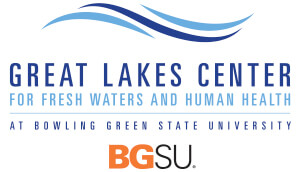Great Lakes Center for Fresh Waters and Human Health
Bowling Green State University has been tapped to lead national research into understanding and preventing toxic algal blooms that plague portions of the Great Lakes and impact freshwater sources around the world.
The Great Lakes Center for Fresh Waters and Human Health, founded with a $5.2 million federal grant, is energizing and expanding research on harmful algal blooms that pose a threat to the health of humans and wildlife. In 2014, toxins from an algal bloom contaminated Toledo’s water supply and highlighted the urgency to study this problem.
BGSU is one of four universities the National Institute of Environmental Health Sciences (NIEHS) and the National Science Foundation (NSF) are funding with a total of $30 million in grants to study the effects of harmful algal blooms on our oceans, estuaries and the Great Lakes.
The Great Lakes Center for Fresh Waters and Human Health, a collaborative effort among BGSU and nine other universities and research institutions, is formalizing and strengthening research partnerships on cyanobacterial harmful algal blooms (cHABs). It is the only project focused on fresh water. The other NIEHS/NSF projects focus on oceans and estuaries.
An International issue
BGSU researchers have traveled the world studying the impact of algal blooms in different fresh water bodies. Undergraduate and graduate students have traveled with BGSU scientists to Lake Victoria (Kenya), Lake Balaton (Hungary) and Lake Winnipeg (Canada) to see how various climates cause algal blooms to form.
To educate other researchers and governing bodies, BGSU scientists are also leading the discussion internationally by speaking at recent global conferences in France and China.
Mission
As a public university, BGSU is committed to serving the public good through research that addresses the issues facing our state, our country and the world. The Great Lakes Center for Fresh Waters and Human Health is a collaborative, multi-disciplinary center of researchers with a common purpose:
- Studying how environmental factors promote or limit harmful cyanobacterial algal blooms
- Creating the data systems and tools needed to better predict and limit harmful cyanobacterial algal blooms
- Serving as a resource, sharing the impacts of algal blooms with communities and stakeholders of Lake Erie and its watersheds
- Training scientists and contributing to global efforts to understand and mitigate harmful algal blooms
Partners for the Great Lakes Center for Fresh Waters and Human Health
- Centers
- Projects
The universities and research institutions below will each play a unique role to contribute to the success of the Center
- Scripps Institution of Oceanography
- University of Washington
- Great Lakes Center for Fresh Waters and Human Health
- University of Maryland College Park
- Woods Hole Oceanographic Institution
- Florida Gulf Coast University
- National Oceanic and Atmospheric Administration
- The Ohio State University | Ohio Sea Grant
- SUNY - College of Environmental Science and Forestry
- University of Michigan
- University of North Carolina
- University of Tennessee
- University of Toledo
- Michigan State University
Updated: 04/05/2022 07:56PM

